
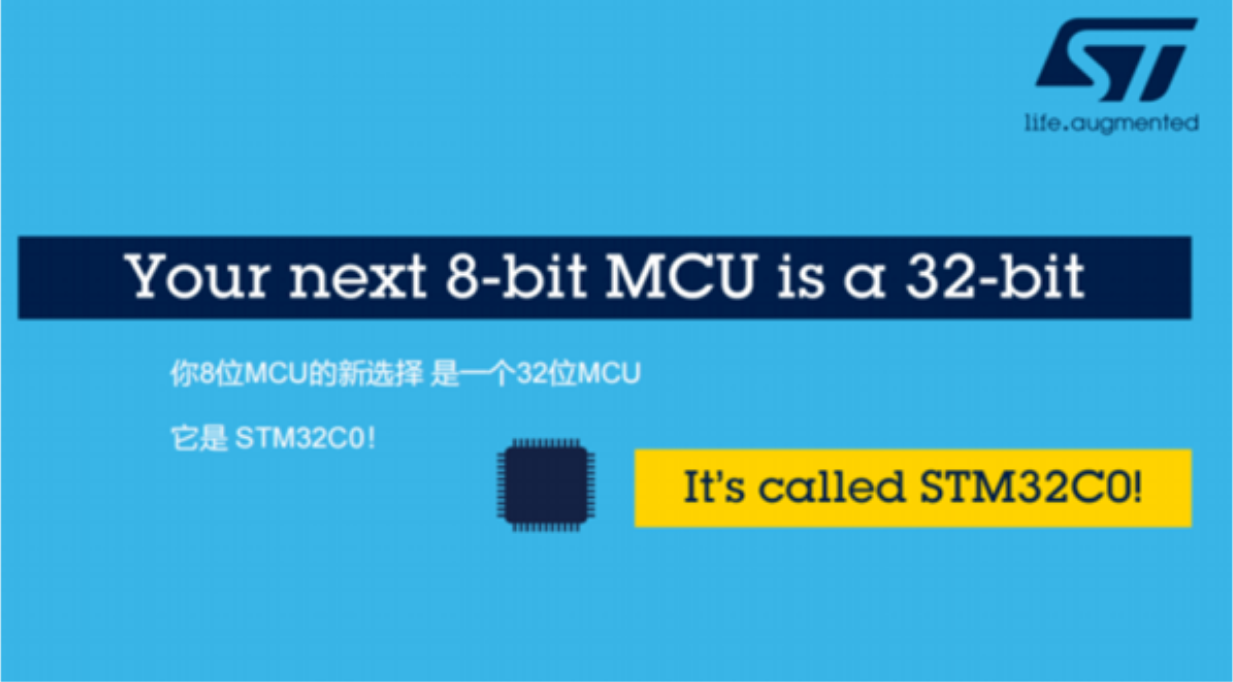
8-bit MCU has low cost, is easy to develop, and its performance can meet the needs of most scenarios. It is widely used in downstream fields such as consumer, industrial control, household appliances, and automobiles (such as car fans, windshield wipers, and skylights). With the perfect "balance" performance in terms of performance, price, power consumption, reliability, and stability, 8-bit MCUs still occupy a considerable position and exhibit strong vitality.
According to ICInsights statistics, in the global MCU products from 2011 to 2020, the proportion of 4/8 MCUs was 15%. By 2026, the global 4/8 MCU still has a scale of $2.4 billion. In the Chinese general-purpose MCU market in 2020, the 8th largest market accounted for 43%.
In order to support the needs of the entry-level market, ST has launched the 32-bit MCU STM32C0 series for cost sensitive applications.
ST MDG China Director Cao Jindong pointed out that 8 MCUs account for about 25% of the entire market, which is actually a very large market, mainly used in small household appliances, toys, simple smart home control, etc.
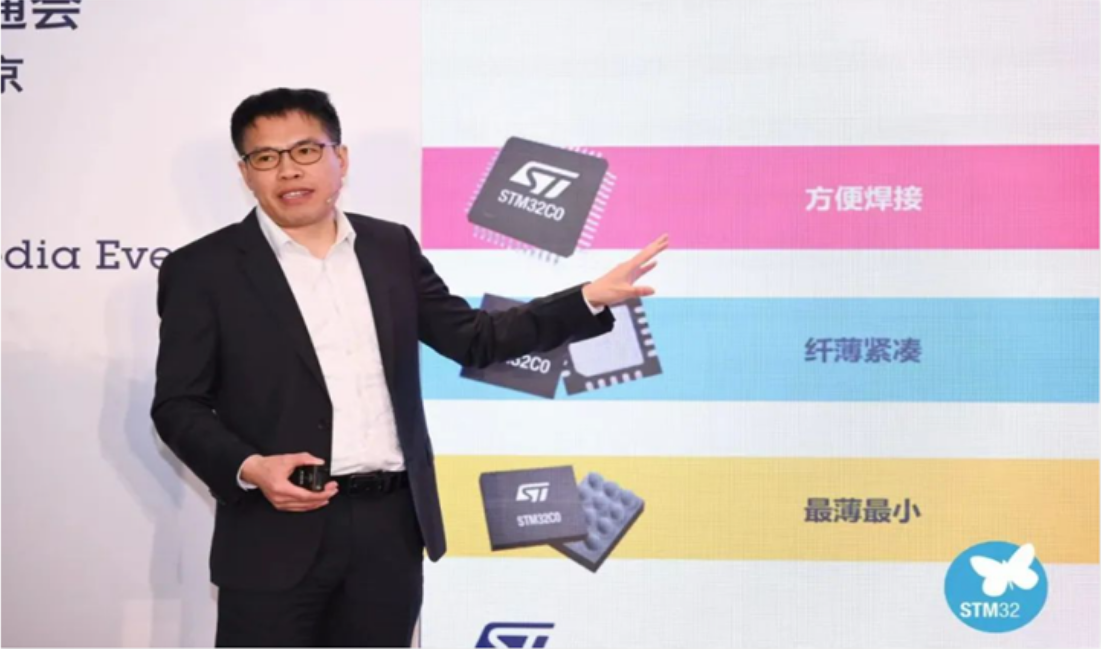
With the upgrading of industries and applications, on the one hand, these devices themselves have a demand for upgrading, such as higher demands for sensor signal acquisition and processing, display, human-machine interaction, data processing, AI algorithms, etc., all of which require strong MCU support; On the other hand, from a cost-effectiveness perspective, 8-bit and 32-bit MCUs are already very close, and even the cost-effectiveness of 8-bit MCUs is not as high as that of 32-bit. Some users have started to switch to 32-bit MCUs.
STM32C0 was born in this context, and it can be said to be the most economical MCU in the STM32 family. From a cost perspective, ST hopes that users can achieve seamless switching from an 8-bit MCU; In addition, STM32C0 can support future optimization and compatibility in terms of reliability and design continuity. As a replacement for an 8-bit MCU, the STM32C0 has a price comparable to the STM8, and its performance is even better, making development as simple as an 8-bit MCU.
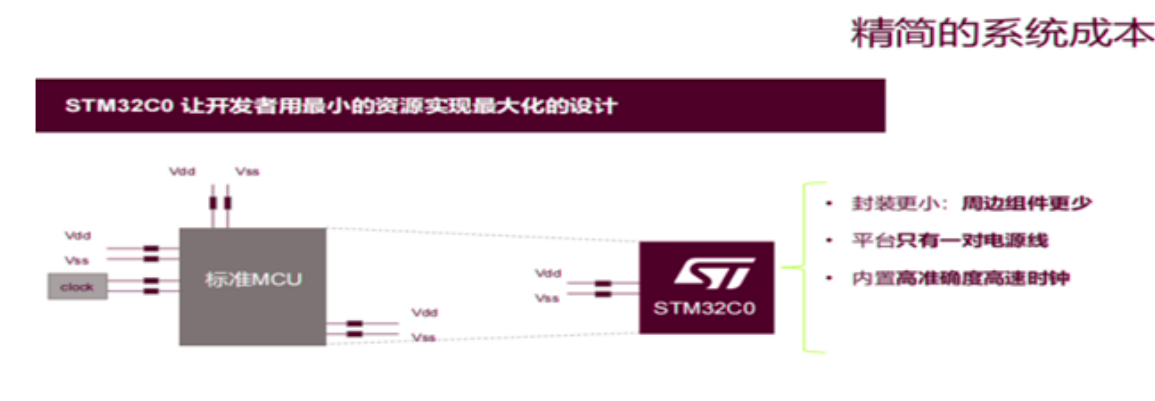
STM32C0 is a typical 8-bit/16-bit application. The STM32C0 series peripherals are simple, cost-effective, and very suitable for engineer development; Compared with similar products on the market, STM32C0 has stronger performance, quality reliability, and stability. It has a large and mature ecosystem of STM32, stable supply, and can accelerate product development and launch. It is the perfect choice for achieving typical 8-bit/16-bit applications.
Economically applicable cost advantages
The tempting price makes STM32C0 the most cost-effective STM32MCU. Fewer peripheral components to achieve smaller PCB size; Platform optimization, equipped with only one pair of power supplies; High precision embedded high-speed clock, STM32C0 fully optimizes BOM costs through these measures, allowing engineers to do big things with little money.
Small and compact multiple packaging forms
STM32C0 offers 9 types of micro packages, ranging from the smallest SO8N to the largest LQFP48, and from 8pin to 48pin. However, the number of pins in a regular MCU is rarely below 20pin.
● 3x3mm 20pin QFN, 28/32/48 pin UFQFPN: Ultra thin micro package
● WLCSP121.42 x 2.08mm: Thinnest and smallest overall size, can be wrapped in wire material, suitable for volume demanding applications
● SO8N, TSSOP20, LQFP32/48: Most commonly used, easy to design

Continuity with STM32 series
The STM32C0 series adopts the same 90nm technology as STM32G0, ensuring high-quality performance standards and easy user migration to STM32G0. The pins consistent with STM32G0 leave room for future product upgrades.
● Based on Arm Cortex-M0+core, with a main frequency of 48MHz
● Provide 44DMIPS instruction throughput and 114CoreMark performance
● Continuity with STM32G0 series: consistent packaging area, shared IP platform, shared technology platform
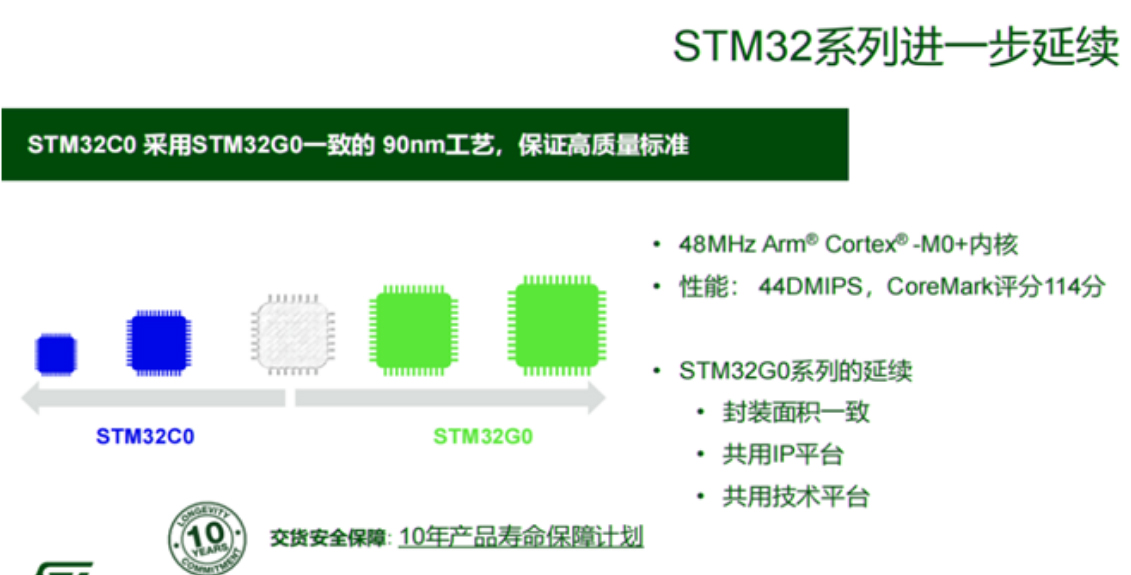
Excellent dynamic power consumption for better efficiency
STM32C0 has a simple low-power architecture with running, stopping, standby, or shutdown modes. Excellent dynamic consumption in operating mode, below 80 μ A/MHz:
● Stop mode of 80-605 µ A, regardless of whether HSIKER is turned on or not; Wake up time depends on transmission and flash memory status
● 8 µ A standby mode
● When the wake-up time is not the main limit, the shutdown mode current is as low as 20nA
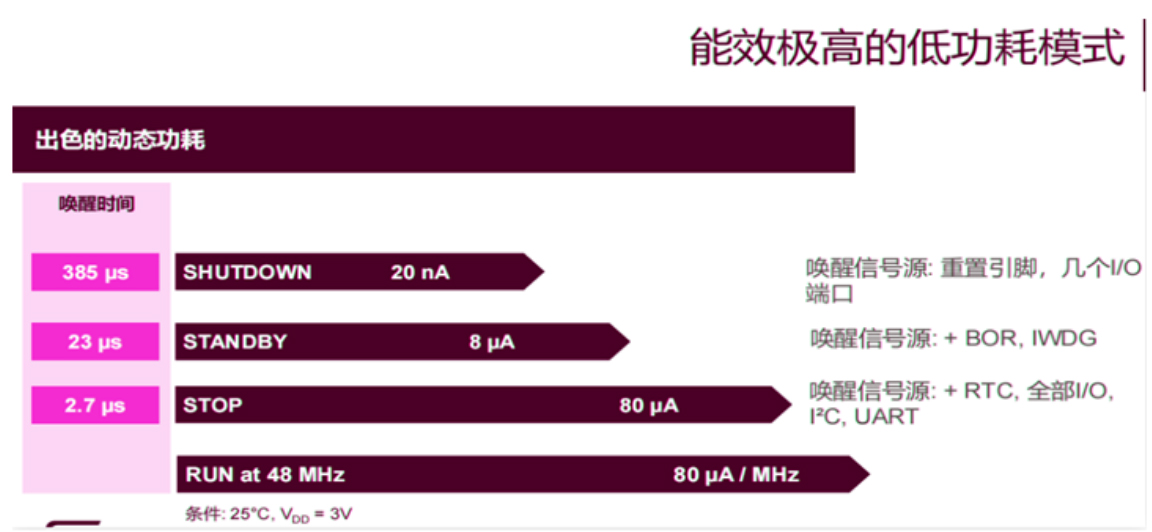
Rich development tools and ecosystem to accelerate assessment, prototyping, and design
STM32C0 has launched multiple development boards for users to choose from:
● Nucleo development board with C031
● Discovery Development Board with C031
● Discovery Development Board with C011
ST's powerful ecosystem, such as PC software, embedded software, operating systems, middleware, etc., will continue to support STM32C0.

The STM32C0 series products have the same feature set and are divided into different models based on different RAM sizes and packaging. All product models have been mass-produced.
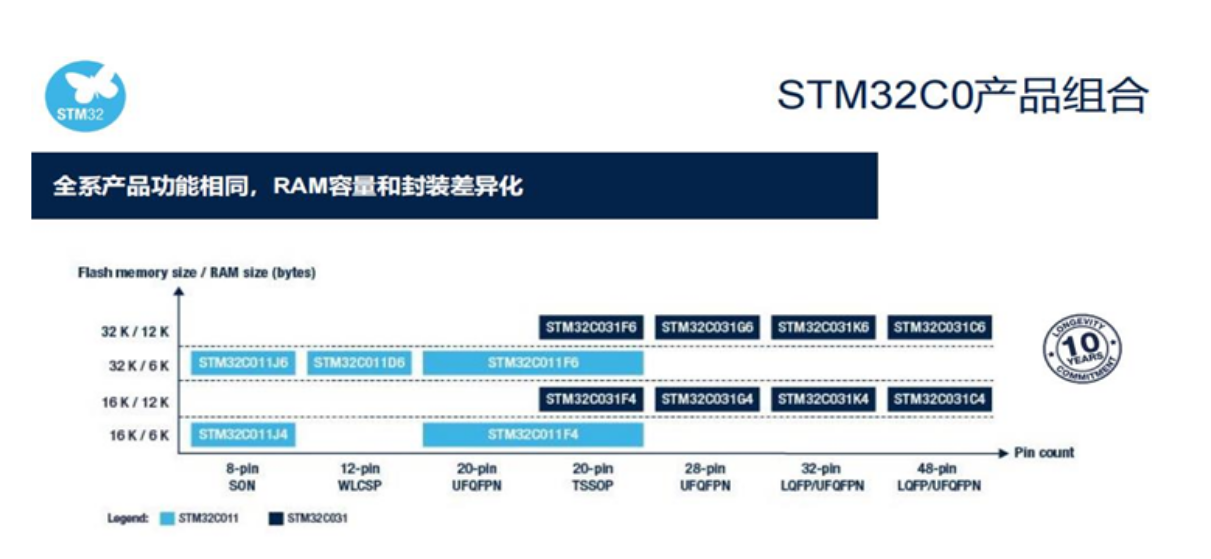
Although aimed at relatively simple applications, STM32C0 still has the "hard core strength" that 32-bit MCUs should have, based on the M0+kernel. Compared with STM8, DMIPS has achieved a 10 times improvement in performance. That is to say, in the past, STM8 could only handle one task in one millisecond, while STM32C0 could handle 10 tasks.
In an application case of intelligent curtains, the previous system required two parts: STM8S for motor control and STM8 for remote control. Now, an STM32C0 can replace STM8S and STM8, while meeting performance and low power requirements. In some complex applications, such as curtains (requiring advanced timers for motor control), as well as some small household appliances, electric tools (such as soybean milk machines) and other motor related applications, STM32C0 will become the mainstream application mode.
The slogan 'The next 8-bit MCU is a 32-bit MCU' sounds quite catchy. But when you think about it, the meaning here is that from the perspective of overall cost-effectiveness and cost, 8-bit and 32-bit are already very close, or the cost-effectiveness of 8-bit MCU is no longer as high as 32-bit. This is why many customers in the middle and low end have switched to 32-bit MCU embrace. Of course, 32-bit MCU suppliers are now more and more Come more, but ST is also committed to comprehensive optimization or providing more. In terms of price friendliness, we still spare no effort in designing and optimizing factory manufacturing Cao Jindong said.
Cao Jindong added that regardless of whether there is STM32C0 or not, the migration and upgrade of the market from 8-bit to 32-bit MCU is already underway. In addition, from suppliers to new product launches and supply chain security, 8-bit MCUs are far less secure than 32-bit ones. Due to some reasons, ST will no longer increase or expand the production capacity of STM8, but will make further investments in 32-bit MCUs. Whether it is customers who originally used STM8 or other 8-bit MCUs, we hope that these customers can use an STM32C0 with better cost-effectiveness